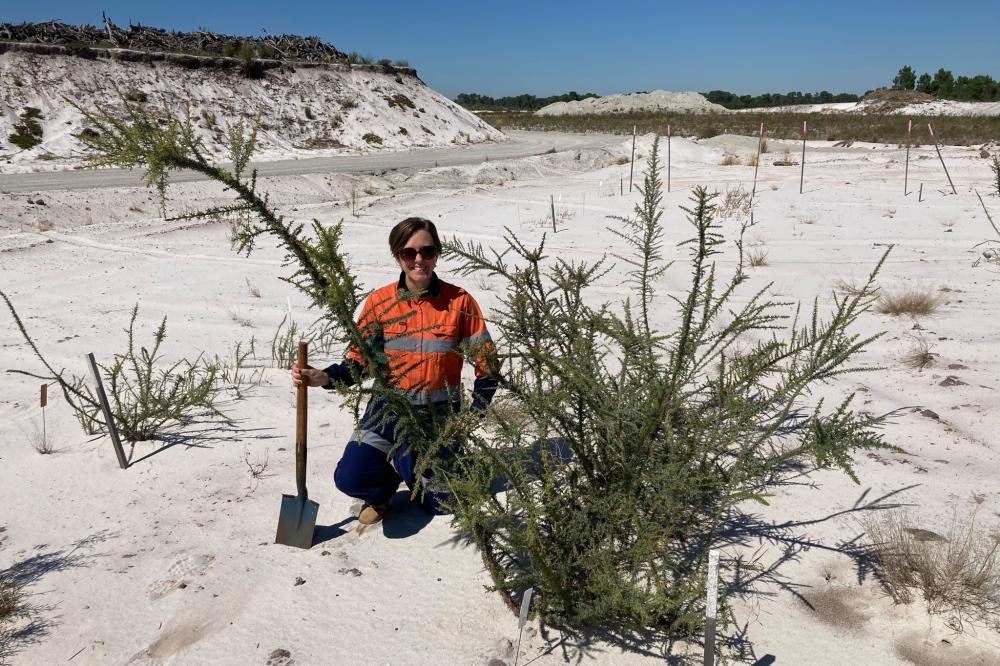Securing the scarp for the future
Restoration of the Mount Eliza Escarpment is well underway, with reprofiling of the slope and new native planting taking place over the coming months.
Parts of the Mount Eliza escarpment are now a different place more than a year after the Polyphagous Shot Hole Borer response in Kings Park.
The deeply saddening discovery of the heavy beetle infestation required the removal of trees on the scarp in 2024-25 to protect the botanic garden, parkland and bushland of Kings Park.
The first response took place at Mounts Bay Gardens in early 2024. While the area initially appeared harsh and bare after the removals of the old Moreton Bay Figs, eight months on has seen a wonderful transformation take place.
The nearly 18,000 plants planted in July 2024 are thriving, with some trees now reaching a height of three metres.
The restoration site features species ranging in size from large eucalypts like Tuarts and Flooded Gum to small ground cover species such as Running Postman and Wattle.
The infestation of PSHB extended along the length of the scarp from Mounts Bay Gardens to Kings Tower apartment, and the remaining trees had to be removed in early 2025.
The Kings Park team has continued working on seed collection and propagation, with 20,000 plants due to be planted along the affected area this winter and a further 40,000 over the coming years.
All the plants used in this restoration project have been grown from seed and cuttings collected here in Kings Park Bushland.
The necessary removal of the trees has required careful management of the escarpment slope by BGPA, geotechnical engineers and professional arborists throughout the project.
Upcoming works from April to June 2025 along the extent of Lover’s Walk will reduce the slope angle and include the installation of erosion control matting.
Lover’s Walk was permanently closed in early 2025 for the safety of the public and visitors and will now be demolished to allow for reshaping of the scarp to take place.
The plant species chosen for the restoration project are not only endemic to the scarp, diverse and able to grow in a harsh environment, but have also been selected for the way that they can bind the escarpment soil to manage the slope in the future.
The following years will see a continuation of in-fill planting and introduction of a wider range of plants from the scarp limestone heath community to the site.
While it was a hard decision to remove the trees, work is well underway to transform the scarp back into a beautiful natural attraction for locals and visitors.







